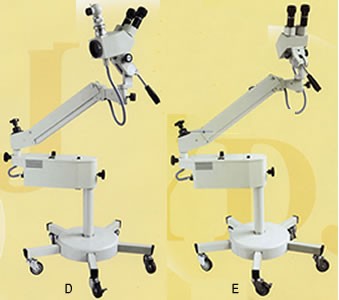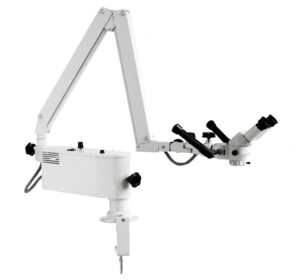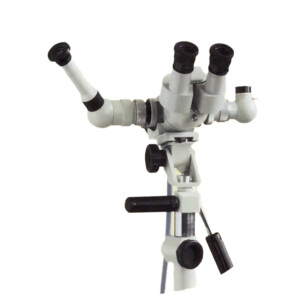Operating Microscopes
Showing all 2 results
Showing all 2 results
Operating Microscopes
An operation microscope is a specialized type of microscope used during surgical procedures to provide high magnification and illumination of the surgical field. These microscopes are designed to provide a clear and detailed view of the surgical area, allowing surgeons to perform delicate and precise procedures.
Operation microscopes typically consist of a binocular optical system mounted on a movable arm, allowing the surgeon to adjust the position and angle of the microscope for optimal viewing. They also include a bright and adjustable light source to provide illumination of the surgical field.
Operation microscopes are commonly used in various surgical specialties, including neurosurgery, ophthalmology, ENT (ear, nose, and throat) surgery, and plastic surgery. They can be used for a wide range of procedures, such as microsurgery, endoscopic surgery, and minimally invasive surgery.
The main benefits of using an operation microscope during surgery include improved visualization of the surgical field, increased precision and accuracy in surgical procedures, and reduced risk of complications or damage to surrounding tissues. They can also improve the safety and effectiveness of certain procedures and minimize patient discomfort or recovery time.
When selecting an operation microscope, factors to consider include the magnification, image quality, ease of use, and compatibility with specific surgical procedures. It’s also important to consider the availability of accessories and software for data recording and analysis, as well as the cost and maintenance requirements of the microscope.
Operating microscopes are specialized microscopes used in medical procedures, particularly in surgery. These microscopes provide a magnified, high-resolution image of the surgical site, enabling surgeons to perform delicate and precise operations.
Key features and components of an operation microscope include:
- Optics: Operation microscopes are equipped with high-quality optics, including high-resolution lenses and objective lenses with various magnification options. These optics provide clear, detailed images of the surgical field.
- Illumination: Operation microscopes have a powerful, focused illumination system that provides bright, shadow-free lighting to the surgical site. Advanced models may use technologies such as xenon or LED light sources for optimal illumination.
- Stereoscopic Vision: Operation microscopes provide stereoscopic or 3D vision, which allows surgeons to perceive depth and accurately judge the position and distance of anatomical structures.
- Adjustable Working Distance: The working distance, or the distance between the objective lens and the surgical site, can be adjusted to provide surgeons with a comfortable and optimal working position.
- Fine Focus and Zoom: Operation microscopes often have fine focus and zoom controls that allow surgeons to adjust the focus and magnification level during the procedure for precise visualization.
- Integrated Documentation: Some operation microscopes have integrated cameras and imaging systems that enable surgeons to capture images or record videos of the surgical procedure for documentation and teaching purposes.
- Ergonomics: Operation microscopes are designed with ergonomics in mind to ensure the comfort of the surgeon during long procedures. They may have adjustable eyepieces, handles, and intuitive controls for ease of use.
It’s important to carefully evaluate your specific needs and choose a microscope that best fits your requirements. Additionally, it may be helpful to consult with our experts in the field to determine the most appropriate microscope for your particular application.



